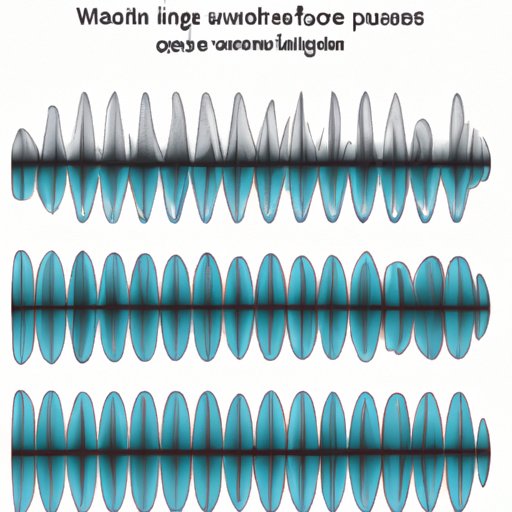Introduction
S waves, also known as secondary or shear waves, are a type of seismic wave that is generated by earthquakes. They are responsible for most of the destruction caused by earthquakes due to their ability to cause ground shaking, liquefaction, and landslides. In this article, we will explore how S waves travel through Earth’s crust and what makes them so destructive.
Exploring the Physics of How S Waves Travel Through Earth’s Crust
S waves are transverse waves that move in an up-and-down motion perpendicular to the direction of propagation. This means that they have a different behavior than other types of seismic waves, such as P waves, which move in a longitudinal direction along the same path. As S waves travel through Earth’s crust, they cause the particles of the material to vibrate back and forth in the direction perpendicular to the wave’s path of propagation.
Seismic wave mechanics dictate that S waves can only travel through materials that are solid, not liquid. This is because they require a medium with rigid boundaries to propagate efficiently. This means that they cannot pass through liquids, such as water or molten lava, and instead are reflected, refracted, and scattered by them. As a result, S waves are more likely to cause damage when they reach the surface of the Earth.
The energy transmitted by S waves is also much greater than other types of seismic waves. This is because they have higher amplitudes, meaning they can cause more intense ground shaking. Additionally, their shorter wavelengths mean that they are better at penetrating deeper into the Earth’s crust, allowing them to cause more widespread destruction.
Examining the Mechanics of Seismic S Waves
The velocity of S waves depends on the composition and structure of the material they are passing through. In general, they travel faster through denser materials, such as rock, and slower through less dense materials, such as sediment. Additionally, S waves can be affected by changes in temperature and pressure, which can cause them to change speed or even reflect off of boundaries.
When S waves reach the surface of the Earth, they propagate outward in all directions in a process known as Rayleigh scattering. This causes them to spread out and become weaker over distance, making them difficult to detect unless they occur close to a seismograph station.

Comparing S Waves to Other Types of Seismic Waves
S waves are often compared to other types of seismic waves, such as P waves and surface waves. P waves, also known as primary or compressional waves, are longitudinal waves that travel faster than S waves and cause less damage. Surface waves, on the other hand, are slow-moving waves that travel along the surface of the Earth and can cause extensive damage.
The difference between S waves and other types of seismic waves lies in their composition and behavior. S waves are transverse waves that move in an up-and-down motion perpendicular to the direction of propagation, while P waves and surface waves are longitudinal waves that move in a straight line along the same path. Additionally, S waves are more destructive due to their higher amplitudes and shorter wavelengths.
Conclusion
In conclusion, S waves are a type of seismic wave that is generated by earthquakes and is responsible for most of the destruction caused by them. They are transverse waves that move in an up-and-down motion perpendicular to the direction of propagation and can only travel through materials that are solid. Their energy is greater than other types of seismic waves due to their higher amplitudes and shorter wavelengths, and they propagate outward in all directions when they reach the surface of the Earth. Finally, they differ from other types of seismic waves due to their composition and behavior.
Understanding how S waves travel through Earth’s crust is important for predicting the effects of earthquakes and developing effective strategies for mitigating their damage. By exploring the physics and mechanics of S waves, we can better prepare for and respond to seismic events.
(Note: Is this article not meeting your expectations? Do you have knowledge or insights to share? Unlock new opportunities and expand your reach by joining our authors team. Click Registration to join us and share your expertise with our readers.)
